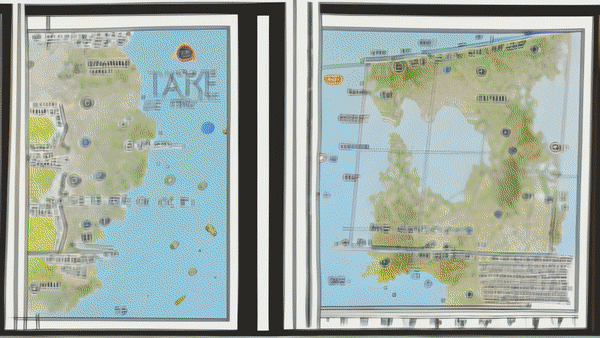-
Animation: The Latent Force of Living Forms
Ars Electronica: Hope, Linz, 2024 -
Installation: The New Times Atlas Of The World
Seoul Mediacity Biennale, Seoul, 2023 -
Sound Design: Whole Earth Codec
Antikythera, Los Angeles / London, 2023 -
Sound Design: Not I
University Of Edinburgh, Scotland, 2023 -
Live Performance: Seven Manifolds
Multiple Locations, 2024-ongoing -
Hurt By The Sun, Linz, 2023 -
Soundtrack: The Beauty Of Becoming
Linz - Bogota, 2022 - 2023 -
Series: Latent Space Divination
Various Locations, 2021 - 2023 -
Speculative Technology: O-CHAIN
A.I.ECOSYSTEMS_ Hackathon, Ars Electronica, Linz, 2021 -
Raumschiff, Linz, 2020-2021 -
Audio. Visuals. Atmosphere., Antwerp, 2021 -
Installation: Remote Landscapes
Can Sisteré, Barcelona, 2021 -
Trust Collective, United States, 2020 -
Universidad Pompeu Fabra, Barcelona, 2020 -
Ritual: Whale Moon
Vibraera, Barcelona, 2020 -
Album: Ybalferran - Our Last Days
Vaaknar, Berlin, 2020 -
Installation: Useless And Necessary
Mixtur, Barcelona, 2019 -
Album: Nine Mountains - Mountain I
Self-publishing, Barcelona, 2019 -
Installation: Balaenofon
Vibraera, Barcelona, 2019 -
Hackathon: Typhoon Dream / Sound Oasis
Urban Sound Symposium, Gent, 2019 -
Music: YOY
Poznań, Berlin, Barcelona, 2016-2021
The New Times Atlas Of The World
Commisioned by Agustina Woodgate in the context of 12th Seoul Mediacity Biennale.
Techniques: AI, Latent Space Manipulation, Generative Systems.

Electronic design: Gabriela Munguía
Supported by: 12th Seoul Mediacity Biennale, Barro gallery in Buenos Aires, and Adam Mickiewicz Institute.
"The New Times Atlas of The World" reinterprets traditional cartographic methods through the lens of contemporary digital practices, challenging the viewer's understanding of maps and their role in shaping our perception of the world.

At the core of the artwork, a 500-page atlas of the world is transformed as Agustina Woodgate sands away its established geographic markers, inviting a contemplation of a world beyond political and colonial constraints. This physical act of removal sets the stage for further exploration of space and boundaries, facilitated by the integration of predictive technology.
Woodgate's extensive engagement with the dynamics of infrastructure and power systems merges with Kotowski's investigation into the computational representations of knowledge. This collaboration delves into the latent spaces of neural networks, where the potential for new forms of cartography emerges from the interplay between erased physical maps, an algorithmic metaphor of geological process, and the generative capabilities of artificial intelligence.

The work employs an automated mechanism to scan the atlas, page by page, activating a generative script that interprets the faint traces left behind. The resulting visualisations offer a glimpse into alternative mappings, where the abstracted and the tangible converge to propose new ways of understanding and interacting with the world.

"The New Times Atlas of The World" does not merely question the arbitrariness of borders and the legacy of colonial mappings; it proposes an exploration of how digital technologies can uncover hidden layers of meaning within what appears to be emptiness. Woodgate and Kotowski's joint effort highlights the transformative potential of technology, inviting viewers to reconsider the very essence of mapping and representation in the digital age.